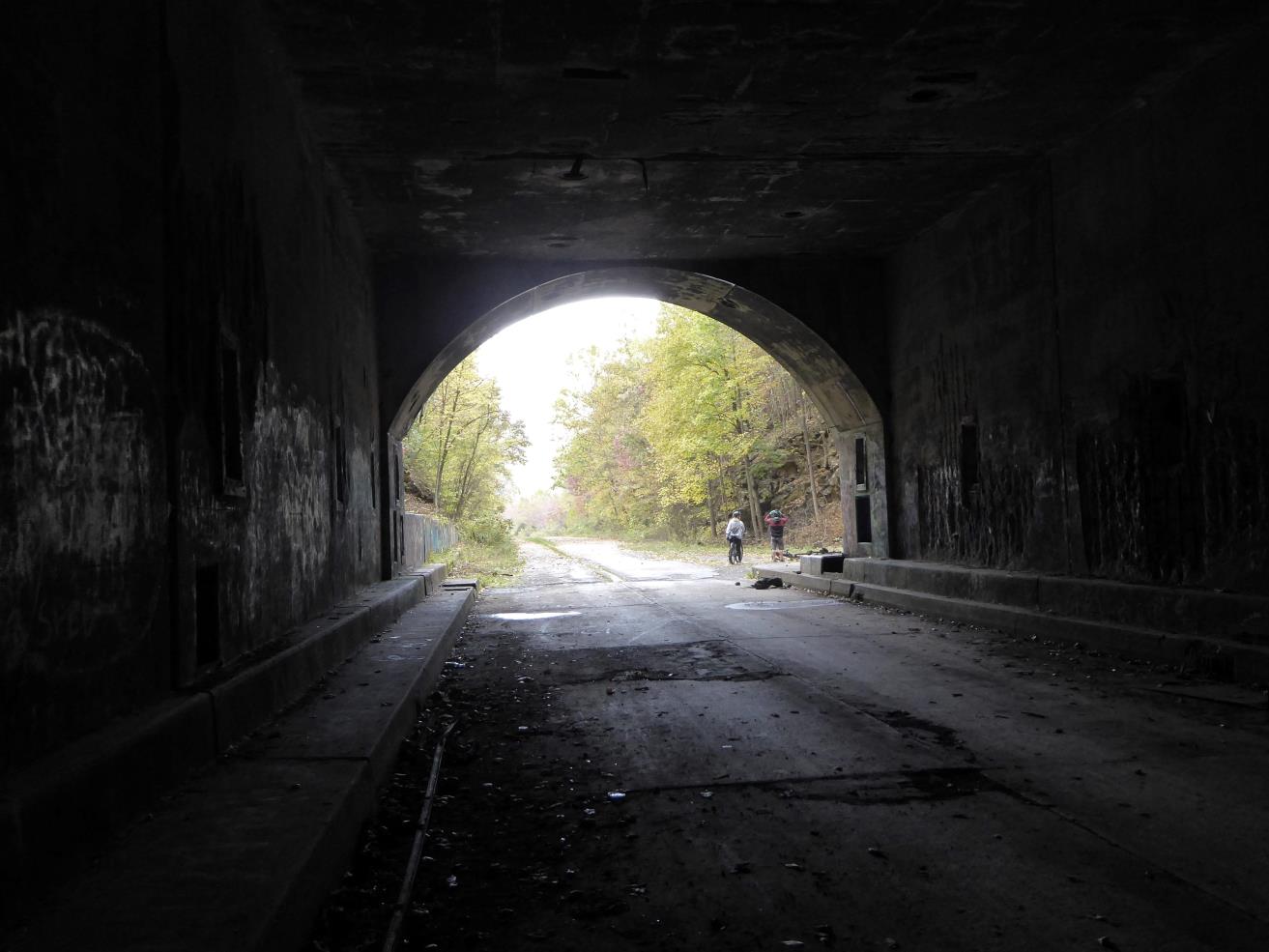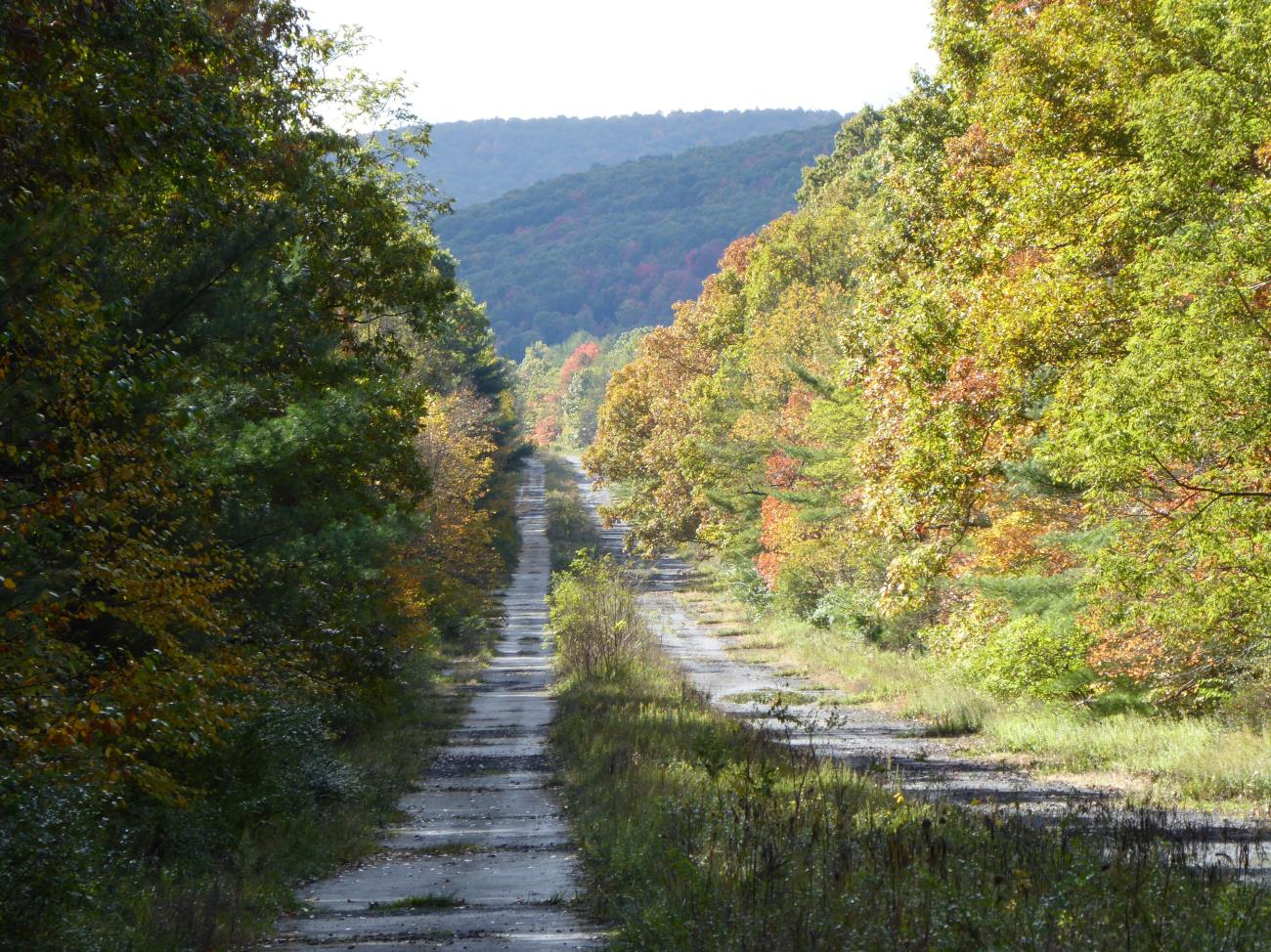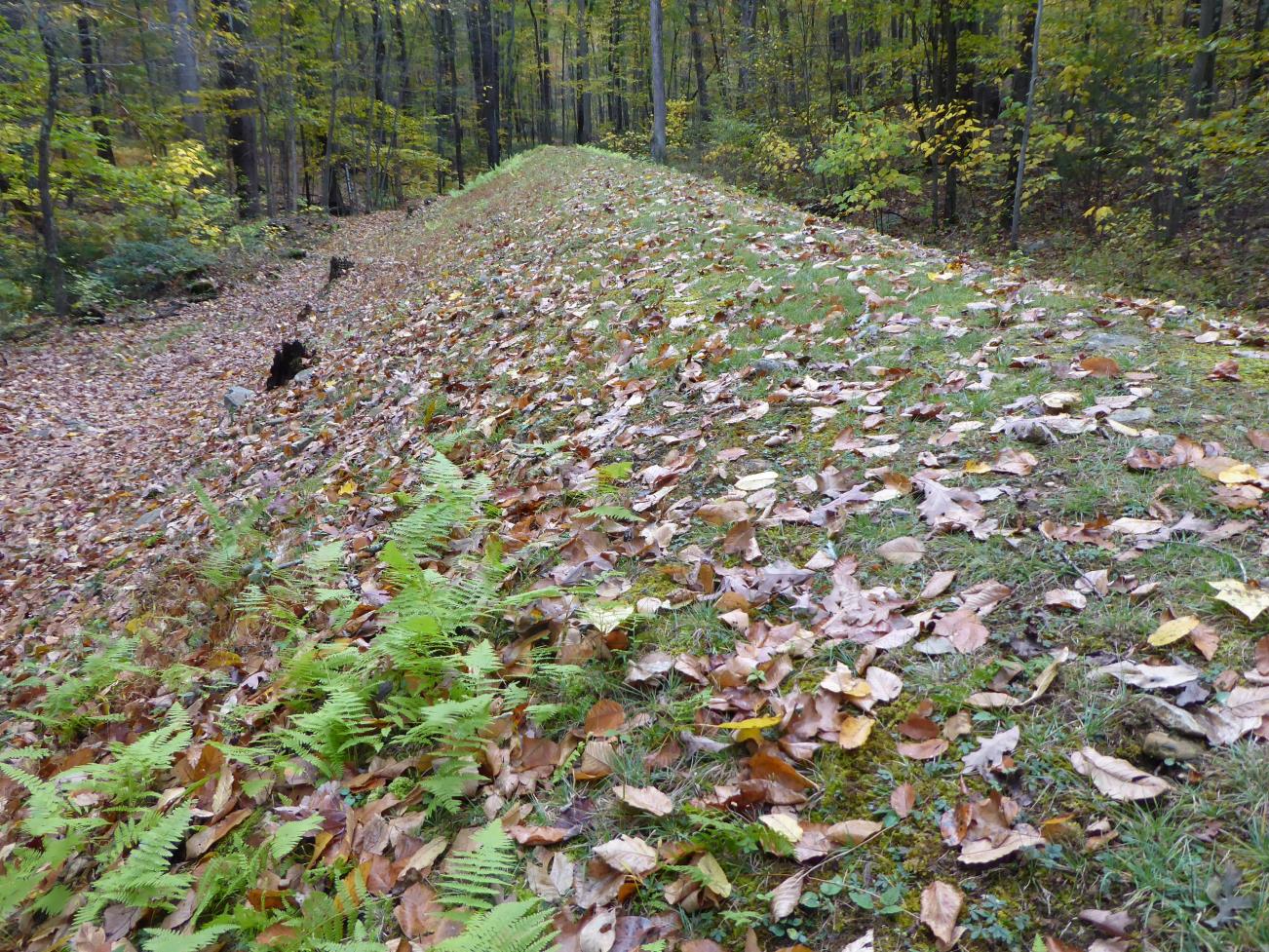Poking Around in Pennsylvania
Fulton County
The Abandoned Pennsylvania Turnpike Revisited
by Craig Mains
Poking Around in Pennsylvania
Fulton County
The Abandoned Pennsylvania Turnpike Revisited
by Craig Mains
In October of 2020 I made a trip to visit the abandoned Ray’s Hill Tunnel that was once part of the Pennsylvania Turnpike. While hiking around in the Buchanan State Forest in 2023, I decided to check out the other abandoned tunnel, the Sideling Hill Tunnel, shown above, which is located just to the east of Bedford County in Fulton County. I also wanted to check out a 140-year-old stone culvert that was left behind by the abandoned South Pennsylvania Railroad. Although the Pennsylvania Turnpike opened in 1940, it shares a history with the stone culvert that goes back to the Gilded Age.
In the 1880s, two of the most powerful companies in the US were the New York Central Railroad and the Pennsylvania Railroad. William H. Vanderbilt, who controlled the New York Central, became alarmed when he discovered that the Pennsylvania Railroad had bought a rail line that connected Buffalo and New York City. He considered this to be an invasion of his company’s business territory. In retaliation he formed a partnership with Pittsburgh area tycoons, including Andrew Carnegie and Henry Clay Frick, who felt the Pennsylvania Railroad was gouging them with exorbitant freight rates. Together, they began to build a railroad across southern Pennsylvania to compete with the Pennsylvania Railroad
Shown above is the western portal of the Sideling Hill Tunnel.
The route chosen for the South Pennsylvania Railroad was challenging since it went against the grain of the topography. The railroad would have connected Pittsburgh in the west with Harrisburg to the east and then to Philadelphia via an existing rail line. Since the ridges in Pennsylvania run northeast to southwest, they presented a series of topographic obstacles. The railroad would have to cross at least six ridges and require the construction of nine long tunnels. There would be numerous curves and steep grades. Construction began in 1881 and continued until 1885.
Photo: WikiPedia
Shown above is the entrance to the Ray’s Hill tunnel under construction in the 1880s. On the left in the front-center is Andrew Carnegie.
Vanderbilt and Carnegie eventually realized that construction of the railroad was considerably more difficult and expensive than they anticipated, and they started to look for a graceful way out. Prominent financier, J.P. Morgan, also began to worry that economic warfare between the two major railroads would not be good for the banking/investment business. He mediated a settlement in which the New York Central gave up their rights to the unfinished South Pennsylvania rail line and the Pennsylvania Railroad sold the line between Buffalo and New York City to the New York Central Railroad. The captains of industry of the Gilded Age had challenged the topography of south-central Pennsylvania and the topography had won. The right-of-way of the now defunct South Pennsylvania Railroad eventually became the property of the state of Pennsylvania.
The tunnels that had been completed sat idle for decades until the Depression, when the state of Pennsylvania began construction of the cross-state turnpike in 1935. Most of the railroad tunnels were repurposed for turnpike tunnels including both the Ray’s Hill and Sideling Hill Tunnels. By the 1950s and 60s though, the tunnels had become bottle necks because they allowed for only one lane of traffic in each direction. While some new tunnels were constructed to eliminate bottle necks, a 13-mile section, which included the Ray’s Hill and Sideling Hill Tunnels, was abandoned in 1968 when the turnpike was realigned.
Photo: State Museum of Pennsylvania, Harrisburg
A view of the Sideling Hill tunnel sometime around 1940 when the turnpike was first opened. Traffic had to merge into one lane entering the tunnel. This caused traffic jams starting in the 1950s, especially during summer weekends when people were traveling back and forth from the coast.
Looking out of the Sideling Hill Tunnel towards the west. Note that even though the entrance is arched, the interior of the tunnel is rectangular. The Sideling Hill Tunnel was one of the longest turnpike tunnels at 6782 feet (about 1.3 miles). Because the tunnel has a slight arch, it wasn’t possible to see light at the other end of the tunnel, unlike the Ray’s Hill Tunnel, which is 3532 feet (about two/thirds of a mile) in length. I did not have a flashlight with me, so I didn’t walk through the Sideling Hill Tunnel like I did three years ago when I visited the Ray’s Hill Tunnel.
I noticed however that a trail led up to the upper level above the tunnel entrance. I was surprised to discover that I was able to freely walk into what was once the upstairs ventilation room of the tunnel. (I had read that it was gated and padlocked.) There were two of these huge fans; the second was to the right of this photo. In between the two fans, part of a doorway is visible in the photo. This led down a short flight of stairs to two long horizontal air shafts that ran along the top of the tunnel. Looking in I could see holes that connected to the tunnel below. Even without the fans operating, the system seemed to be working as there was a strong breeze blowing up from the tunnel below through the air shafts into the fan room. I can only imagine what it would have felt, sounded, and smelled like when the fans were operating. Without a light I couldn’t see very far into the air shafts, but I assume people crawl around in them and leave graffiti behind just like they do in the main tunnel.
On the way back, a view to the west looking at what is left of the pavement of the old turnpike. That is probably Ray’s Hill on the horizon.
Not far from the Sideling Hill Tunnel was a trail called the Railroad Arch Trail that led to the stone culvert I mentioned earlier. This small building was supposedly the shed or magazine where explosives were stored during construction of either the South Pennsylvania Railroad or the Pennsylvania Turnpike. I have read it was for the railroad, but I am not so sure about that.
While the Pennsylvania Turnpike roughly follows the route of the South Pennsylvania Railroad, it deviates from the railroad right-of-way in numerous places. Since cars and trucks can traverse steeper slopes than trains, the turnpike sometimes took a more direct path. This left some orphan sections of the old railroad in different places.
This stone arch, which is less than a mile from the Sideling Hill Tunnel, was built as a railroad overpass over an unnamed stream. It is sometimes referred to as a viaduct, but it seems more like an elaborate culvert. It was built in the 1880s for the South Pennsylvania Railroad by immigrant Sicilian stone masons. When construction of the railroad ended, the tunnel was left behind and the forest grew up around it.
A view of the top of the culvert. It is about 200 feet long. Why it needed to be that long isn’t clear unless the rail line was supposed to cross the structure at an angle.
A view of the upstream end of the “viaduct.” The tunnel is about 10 feet wide. The arch is a testament to the skill of Italian stone masons as it was built without any type of mortar. It has gone more than 140 years without any maintenance, yet there is no apparent deterioration.
Besides this arch, there are also numerous old cut and fill locations and stretches of abandoned railbeds scattered throughout south-central Pennsylvania that were left behind by the “Ghost Railroad” that was never completed. Both the Sideling Hill Tunnel and the Railroad Arch are legacies of the South Pennsylvania Ghost Railroad.
November 2023
Sources
Buchanan State Forest (pa.gov)
Sideling Hill Tunnel - Wikipedia
South Pennsylvania Railroad - Wikipedia
The Old South Penn: “Vanderbilt’s Folly” (archive.org)










